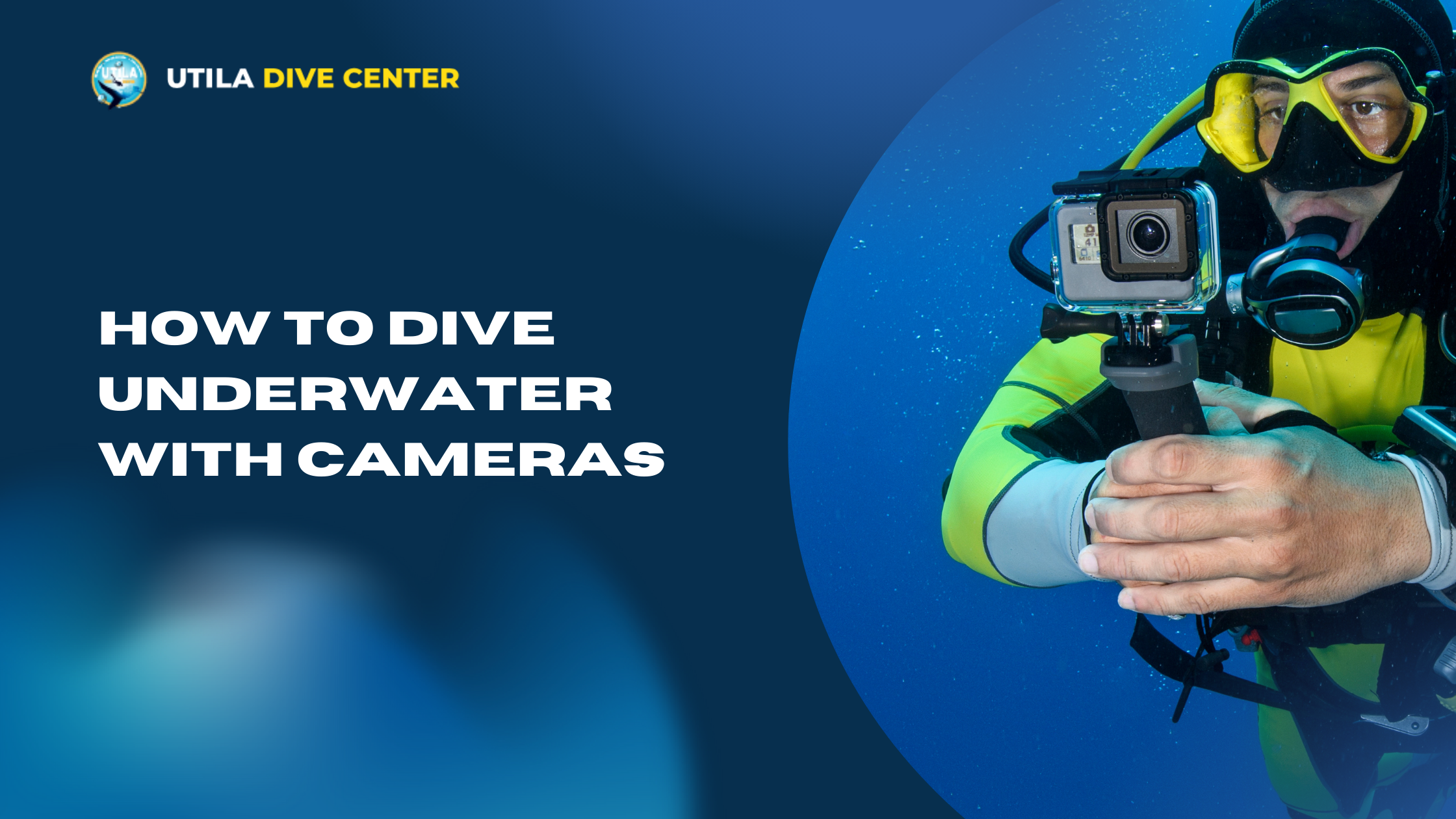
How to dive underwater with cameras
How to dive underwater with cameras
By: Manny Lagos | Date: 2025-03-21T09:18:34.783Z
Do you want to take your underwater adventures to the next level by capturing the natural beauty of the ocean? If you’re dreaming of becoming an underwater photographer or just want to snap a few insta-worthy pics during your dive, diving with a camera is an absolute game-changer.
In this guide, we’ll share some essential underwater photography tips and tricks to make sure your dives and your photos are nothing short of amazing.
Here’s how to click some awesome pictures using underwater cameras.
Selecting the Right Equipment for Underwater Photography
The very first step in underwater photography is choosing the right equipment. You need to have equipment that’s specifically designed for underwater use.
Choosing Your Camera
Here’s what to keep in mind when picking your SCUBA cameras:
- DSLR vs. Mirrorless:
While both DSLRs and mirrorless cameras provide professional-grade images, mirrorless cameras are comparatively easier to handle in the water.
- Action Cameras:
Looking for something lightweight AND easy to use? Go for action cameras like GoPros. They’re lightweight and come with built-in waterproofing. Perfect for capturing wide-angle shots and video footage.
- Compact Cameras:
For beginners, compact cameras with waterproof cases are a fantastic choice. They are budget-friendly, user-friendly, and allow you to enjoy your dive rather than getting lost in settings.
No matter which kind of diving camera you choose for underwater photography, make sure it’s packed in a waterproof casing suitable for your diving depth.
Necessary Accessories
Getting a suitable diving camera isn’t enough, here are a few necessary accessories to help you get the most out of your underwater photography.
- Underwater Housing:
This is a non-negotiable. Make sure your housing is compatible with your camera model and suitable for the depths you’ll be covering.
- Lenses:
Going for close-ups of microorganisms? Macro lenses are perfect for you. Want to capture a shipwreck or the stunning coral reefs? Wide-angle lenses are the way to go.
- Strobes or Video Lights:
The deeper you go, the darker it gets. Good strobes or video lights will make a huge difference in your pictures.
- Stabilising Equipment:
Investing in a tripod or a stabiliser is super important, especially for videographers.
Preparing for the Dive with Your Camera
Before your dive, make sure you’ve taken everything on your SCUBA diving gear list. Once you’ve got the gear right, it’s time to prepare for diving with a camera.
Understanding Buoyancy
Good buoyancy control is key to stunning underwater photography. It helps you stay steady and nails that perfect shot.
Underwater photography tip: Master hovering and fine-tuning your buoyancy– use your breath for adjustments (Inhale to rise, exhale to descend)
Understanding the Controls
It’s really important to familiarize yourself with your camera’s controls before even dipping your toes in the water. You don’t want to be fumbling with the settings mid-dive, right?
So before going underwater, spend some time and understand how to adjust aperture, shutter speed, and ISO settings.
Lighting and Composition Techniques
When it comes to underwater photography, natural light is everything. But here's the catch– colours start to diminish the deeper you go. That's where strobes or video lights make your photos pop.
Composition is important too. Keep an eye on your surroundings, focus on the subject, and try using the rule of thirds to get a balanced shot. You’re free to play around with different angles, lighting, and shadows to add some extra depth, drama and meaning to your photos.
Diving Techniques for Stability and Focus
If you want crisp, clear pictures of the underwater world, maintaining stability is of utmost importance. Controlling buoyancy and holding a camera in one hand can often throw off your balance, so keep your arms close to your body and move slowly. This helps to avoid disturbing the water and your subject.
When you’ve got the perfect shot lined up, just focus on the subject. Maintain balance, stay patient, and most importantly– don’t rush it. Believe us, the result will be worth the wait!
Dry Runs and Pre-Dive Checks
Before you dive into the ocean, don’t forget to do a quick dry run. Explore your camera settings and practice photography in a controlled environment like a pool or shallow water. This gives you a chance to double-check your equipment and make sure everything’s working properly. Check if your waterproof housing is in place, and test it for any leaks. Also, make sure the O-ring is clean and properly seated. Trust us, it’s better to spot and correct any issues on land than 20 feet deep underwater!
Post-Dive Care and Camera Maintenance
Cleaning and Drying Your Camera Gear
After your dive, rinse your camera and housing with fresh water to get rid of salt and sand. Pay extra attention to seals and buttons as salt buildup can cause irreversible damage over time. Use a soft brush to clean sneaky areas.
Let everything dry completely before opening the housing. And when it’s done, keep your diving camera in a cool, dry place away from direct sunlight.
Data Management and Backup
Once you’re back on dry land, transfer all your images and footage to a computer or an external drive. Once it’s done, make sure you back all your data in multiple places– after all, who wants to risk losing those once-in-a-lifetime moments!
You can also organize your photos into folders based on dates and location. It makes finding and editing your favourite shots much easier.
Summary
By now you know that diving with a camera isn’t just about clicking beautiful photos– it’s an exhilarating experience in itself. Like any other skill, it takes some preparation and the right knowledge to begin, but with the right equipment, solid buoyancy control, and a little practice, you’ll be capturing magical underwater moments in no time.
If you want to take your underwater photography game a notch higher, let us help you out! At Utila Dive Centre, we’ve got specialised PADI courses and training to help you develop and hone your underwater photography skills–no matter the experience level. We teach you how to free dive too, if you’re interested in it!
Contact us to know more and get started!
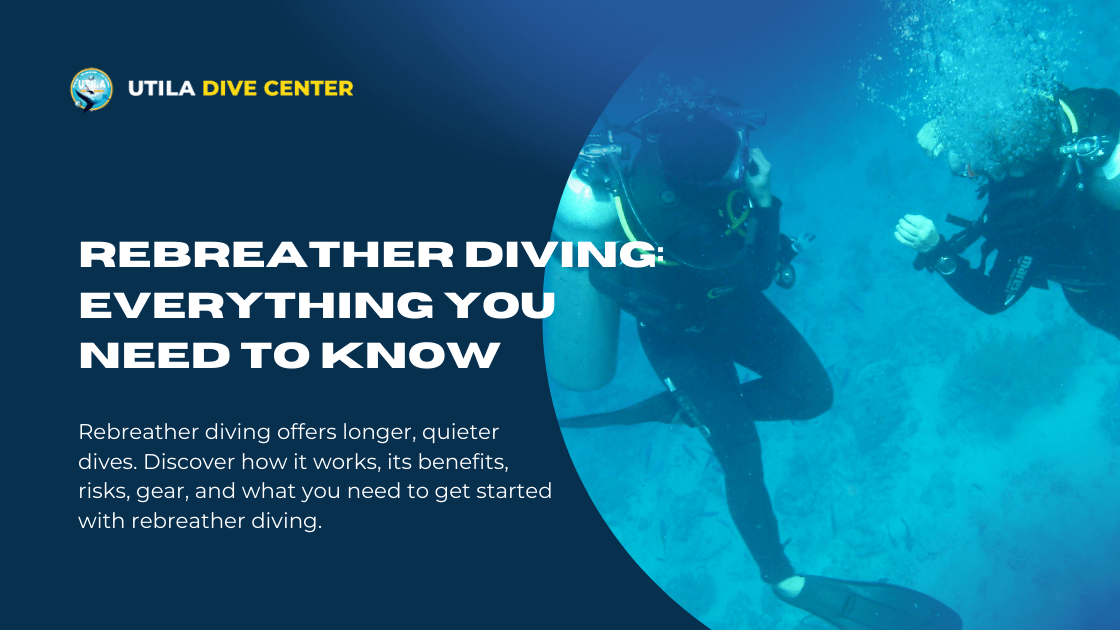
Rebreather Diving: Everything You Need to Know
Rebreather diving offers longer, quieter dives. Discover how it works, its benefits, risks, gear, and what you need to get started with rebreather diving.
Read more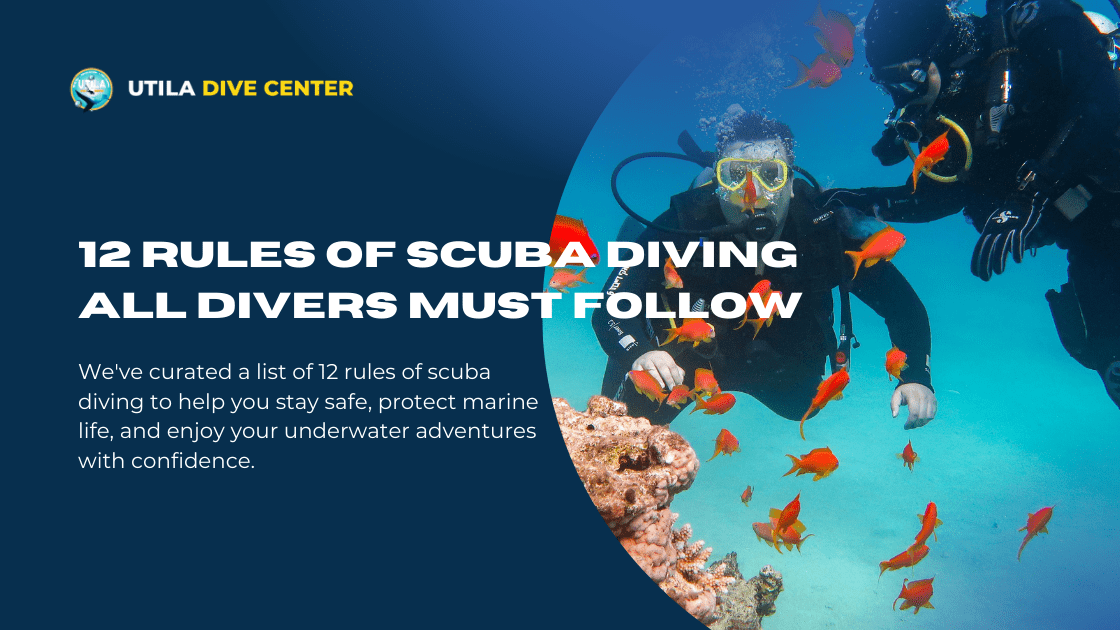
12 Rules of Scuba Diving All Divers Must Follow
We've curated a list of 12 rules of scuba diving to help you stay safe, protect marine life, and enjoy your underwater adventures with confidence.
Read more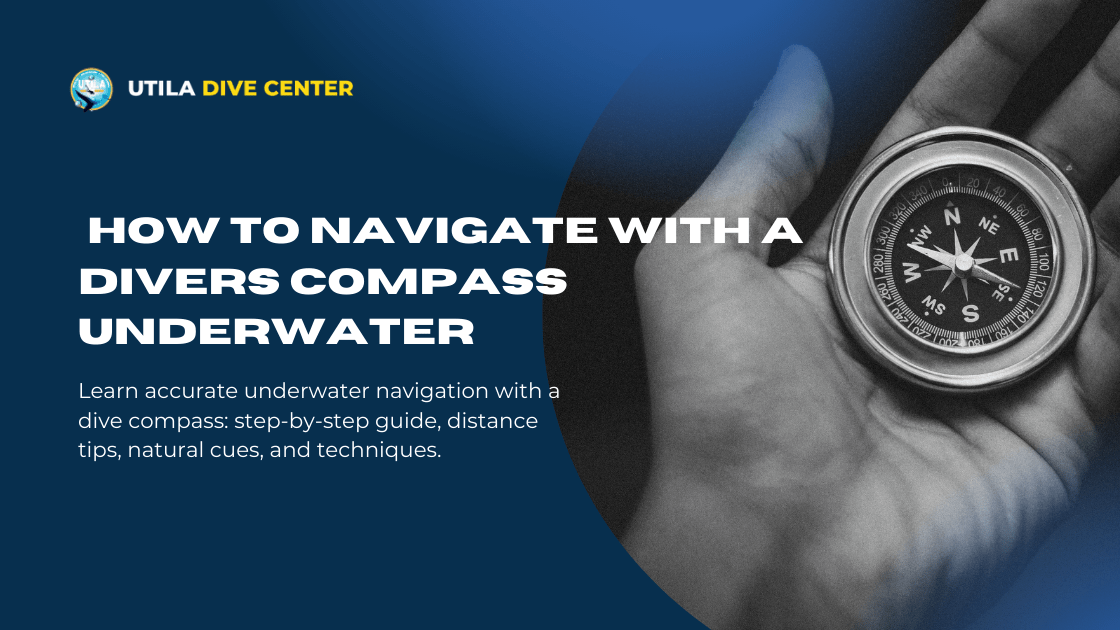
How to Navigate With a Divers Compass Underwater
Learn accurate underwater navigation with a dive compass: step-by-step guide, distance tips, natural cues, and techniques.
Read more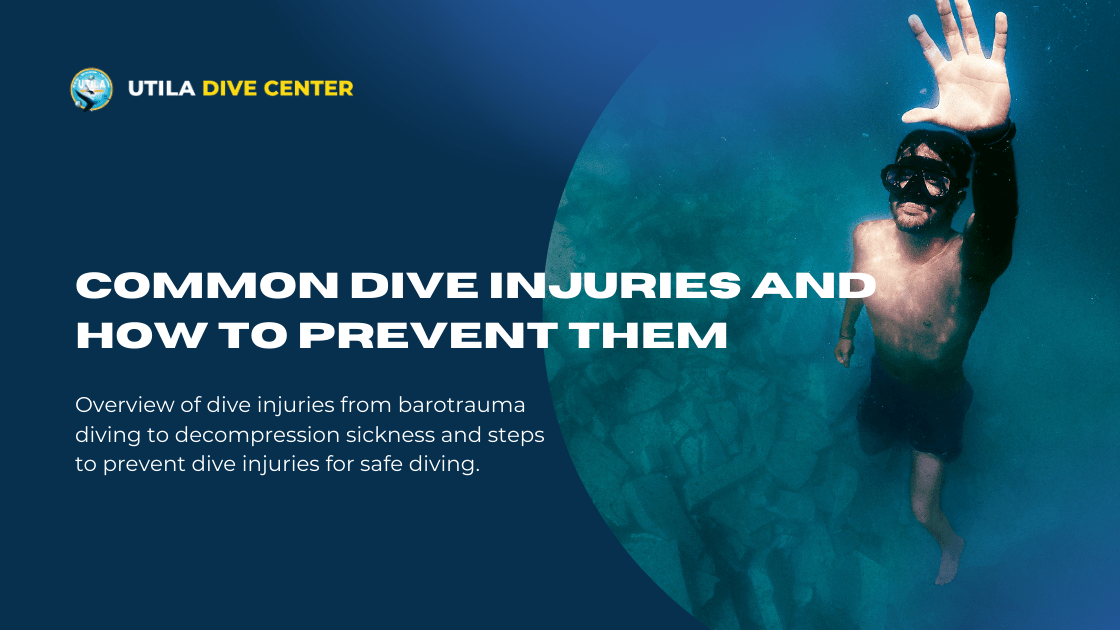
Common Dive Injuries and How to Prevent Them
Overview of dive injuries from barotrauma diving to decompression sickness and steps to prevent dive injuries for safe diving.
Read more